GEDDES’ LIFE AND WORK
ORIGINS AND BOYHOOD
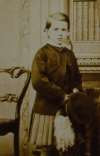
Patrick Geddes was born in 1854 in Ballater, a small town in the north-east of Scotland where his father’s regiment was garrisoned to guard Balmoral Castle. He was baptised with the name of Peter, but his family soon started calling him Patrick or more commonly Pat.
Patrick’s father served for over 20 years in the Black Watch and for another 20+ years as an officer in the militia. His mother had her own income as a teacher in the regimental school. His two brothers did very well, one as Manager of the Land Bank of Mexico and retiring at 42, the other as a dealer in coffee and spices in New Zealand.
Captain Geddes and his son enjoyed walks in the countryside, exploring the surrounding hills collecting specimens of wild ferns and flowers for their garden. Patrick developed an interest in observing nature’s wonders which lasted all of his life. The Tay valley view from nearby Kinnoull Hill was an inspiration for the “Valley Section”.
He attended the Perth Academy when he was about eight years old. His teachers said that he was an eager but restless pupil. According to biographer Philip Boardman, he was reading eight to ten books every week during this period, rapidly going through the entire school library and the local library as well.
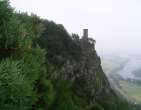
Kinnoul Hill 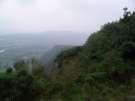
Kinnoul Hill Right 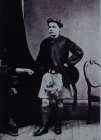
Pg At 15 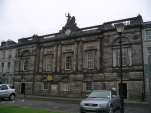
Perth Academy
STUDENT DAYS
Following school, Geddes’ father wanted him to pursue a banking career, following on his brother’s success in Mexico. He tried this for 18 months, acquiring an insouciant attitude to money, but the bank proved too restrictive for his restive imagination. He resigned the post, though he had glowing reports from his supervisor who was sorry to lose him. A period of self-conducted studies in Chemistry and Botany at home followed and then he decided that it was time to leave the parental home.
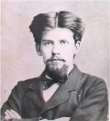
He became a protégé of Thomas Huxley and Charles Darwin at the Royal School of Mines and University College London and was headhunted to set up the Scottish Zoological Station, the first in Britain. Invited to Paris by a friend and colleague, he was introduced to the new social sciences and intellectual influences by attending lectures at La Sorbonne.
A temporary blindness on an expedition to Mexico forced him into reflection and he began to move gradually from specialism into a wider generalism. While still accepting that evolution was essentially ‘a gladiator’s show’, he also stressed the importance of the sacrifice of the mother for her offspring. As Assistant to the Professor of Botany at Edinburgh University, he was able to spread his activities into areas of social concern.
MARRIAGE AND CAREER
Patrick Geddes and Anna Morton were married in 1886. Anna and her two sisters, Rebecca and Edith, had received very good education in Dresden including training in Music. James Oliphant, headmaster of a school for young ladies in Charlotte Square was married to Edith Morton. In 1884, Geddes, Oliphant and the Morton sisters were among the founder members of the Environmental Society, which later evolved into the better known Social Union.
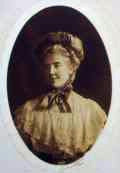
Anna Morton 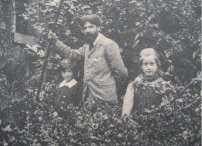
Pg Alasdair Norah 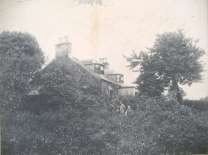
Mount Tabor
In 1888 Geddes was awarded the personal part-time Chair of Botany at University College, Dundee. He and his family now had a degree of security, while for half the year he could develop his other interests, on three continents. During and after World War I he made three extended visits to India, in 1919 being given the Chair of Civics and Sociology at Bombay (Mumbai).
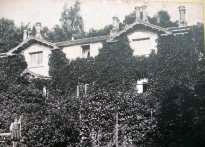
Returning to Europe, he set up the College des Ecossais in Montpellier, where he was able to promote his ideas on a liberal education to an international clientele.
In 1932 he returned to London to accept his second offer of a knighthood. Owing to King George’s illness, he did not receive the accolade until 25 February. In London’s atmosphere he contracted an illness and returned to Montpellier, where he died on 17 April.
Thus he was Sir Patrick Geddes for only 52 days.
WORK
Geddes’ original work as a biologist gave way to other interests, but he continued to write on the subject, often in collaboration, until 1931 (eg Life: Outlines of General Biology with Sir J Arthur Thomson). His university teaching was not narrowly targeted at examinations but was general and wide-ranging, sometimes disturbingly so.
Most observers look at society and say ‘Something must be done’. Geddes was inspired to action and his enthusiasm was such that others had to follow. Many of his enterprises were started in Edinburgh, but he was able to generalize from his local experience, elsewhere in Britain, in France, in Cyprus, in Palestine, in India. In Edinburgh’s Old Town, he took derelict properties and, by involving local people in programmes of ‘conservative surgery’, he began a process of regeneration which also drew middle class academics and free thinkers back to the area.
Based on his model of ‘Sympathy, Synthesis and Synergy’, Geddes prepared plans for dozens of cities from Dunfermline to India, (over fifty), as well as the University of Jerusalem, and the (then) colony of Cyprus. His big exhibitions like his Cities Exhibition , won awards, toured the capitals of Europe and won adherents in Ireland and India.
Geddes’ Outlook Tower, was ‘the world’s first sociological laboratory’, an interpretation centre and a haven for dissidents in exile. Ramsay Gardens was spectacularly successful in helping to enrich the urban landscape. Student hostels – of which Riddles Court was the first self-governing one – were another device for bringing ‘Town and Gown’ together.
Geddes’ approach was not mechanistic. He was interested in cities as hubs of cultural creativity and, influenced by Darwin, he saw the job of the planner as being to foster progressive cultural evolution. People’s lives had to be enriched. Though no artist himself, he set up a University Hall School of Art to remedy the deficiencies in the existing system. Stained glass windows, murals and sculpture, all carrying improving messages, were built into Geddes’ schemes. His collaborations with Arts and Crafts architects and prominent artists such as John Duncan made an important contribution to the cultural life of Scotland’s capital. He had a strong engagement with the health of Scotland’s culture and sense of itself, taking inspiration from figures such as Allan Ramsay and John Stuart Blackie. Hugh McDiarmid, the dominant figure in the literary revival of the nineteen-twenties which came to be known as the Scottish Renaissance, acknowledged Geddes as one of its progenitors.
Little patches of ‘idle’ land in the Old Town were surveyed (75 of them) and turned into community gardens – ‘greening the environment’.
Education, was a Geddes cause. He rejected the ‘artificial orphanages called boarding-schools’ and the ‘cram-exam’ system of schools and universities. The answer was home education and greater generalization. His innovative summer schools began with local biology and spread to take in a wide curriculum with an international clientele – particularly of young women seeking educational challenge.
As a Peace Warrior he showed a certain naivety. From the 1890s onwards he lectured, organized conferences and wrote on The Making of the Future, setting out five ‘sound stones’ for building the ‘Perfect City of the Future’. Geddes may have thought it enough to point out the real causes of four years of war and the necessary steps to make war unnecessary, but the victors were in no mood for anything but revenge.
